Efficient guitar technique
Good technique ensures smoother play, fewer mistakes and ultimately more fun playing.
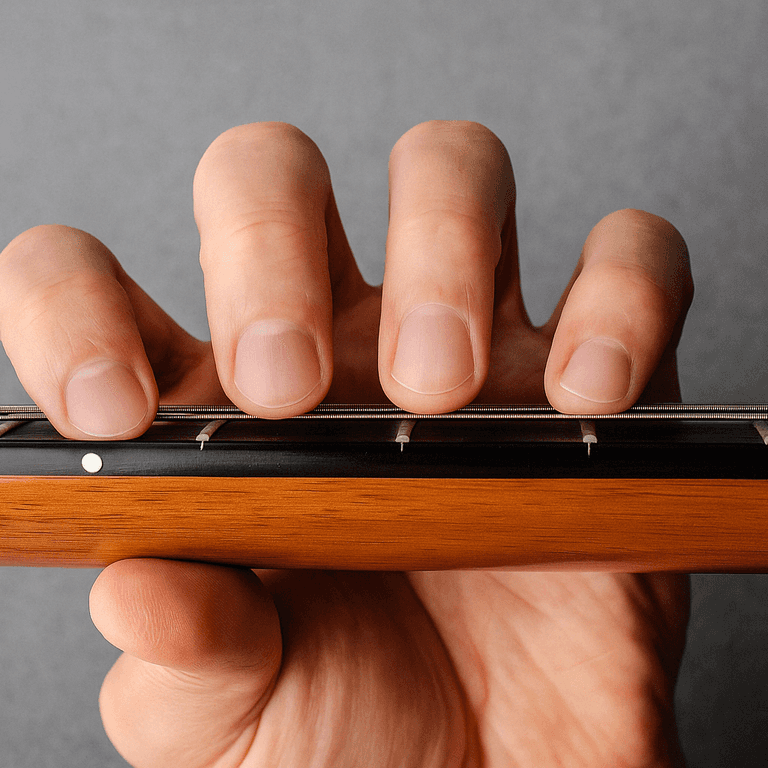
Fingering is a crucial part of guitar playing, whether you’re playing an acoustic or an electric guitar. Good technique will lead to smoother playing, fewer mistakes, and ultimately more enjoyment. While the basic principles of fingering are largely the same for both types of guitars, there are some subtle differences that arise primarily due to their physical characteristics and encouraged playing styles. Below, I’ll explain how to improve your fingering and technique, and what the differences are between the two types of guitars.
Fingering refers to the way you place your fingers on the guitar strings and fretboard to play chords, scales, and melodies. Good fingering begins with a relaxed posture and correct hand position. Thumb Position: The thumb of your fretting or action hand should generally be positioned behind the neck of the guitar, around the middle of the back of the neck. This allows for maximum flexibility in the fingers and prevents tension.

Fingertips: Use your fingertips to press down on the strings, just behind the fret (and not on it). This minimizes the risk of fret buzz and produces a clean, clear tone.
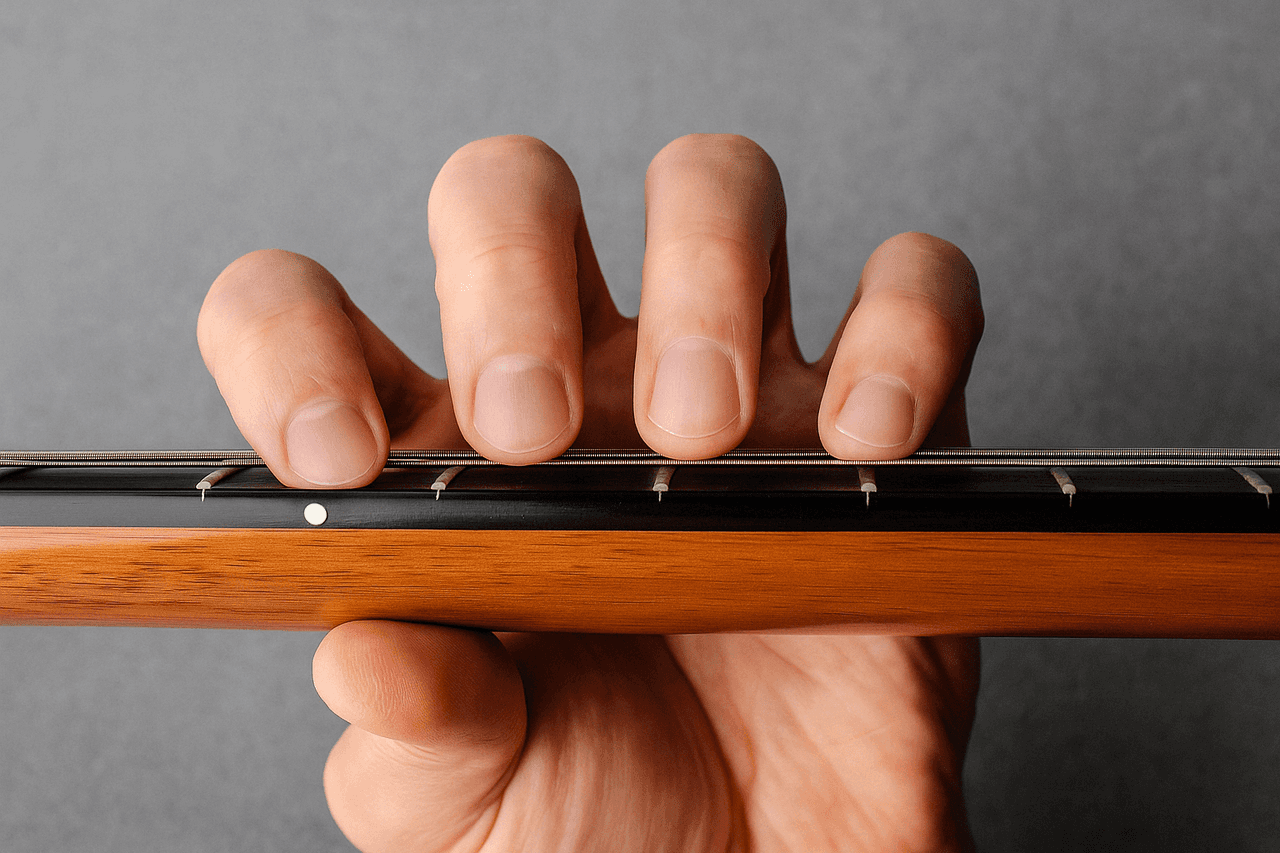
Finger coordination: For efficient fingering it is essential to keep your fingers as close to the fretboard as possible and to use them as independently as possible. Exercises such as scales and chromatic exercises help to improve your finger coordination.
While the basic principles are the same for both guitars, there are important differences in playing style and physical characteristics that affect fingering.
Acoustic guitars: tend to have thicker strings and therefore higher string tension. This requires more force to press the strings all the way down. This can cause finger fatigue for beginners, but it also develops more strength and control in the hand. For chords on an acoustic guitar, correct fingering is crucial, as the thicker strings often muffle or produce unwanted sounds.
Electric guitars: tend to have thinner strings and lower tension, making it easier to press down on the strings. This makes playing complex licks and solos easier, and players can also move faster across the neck with less force. However, the lower tension means that you need more control to apply the right pressure without accidentally bending or detuning notes.
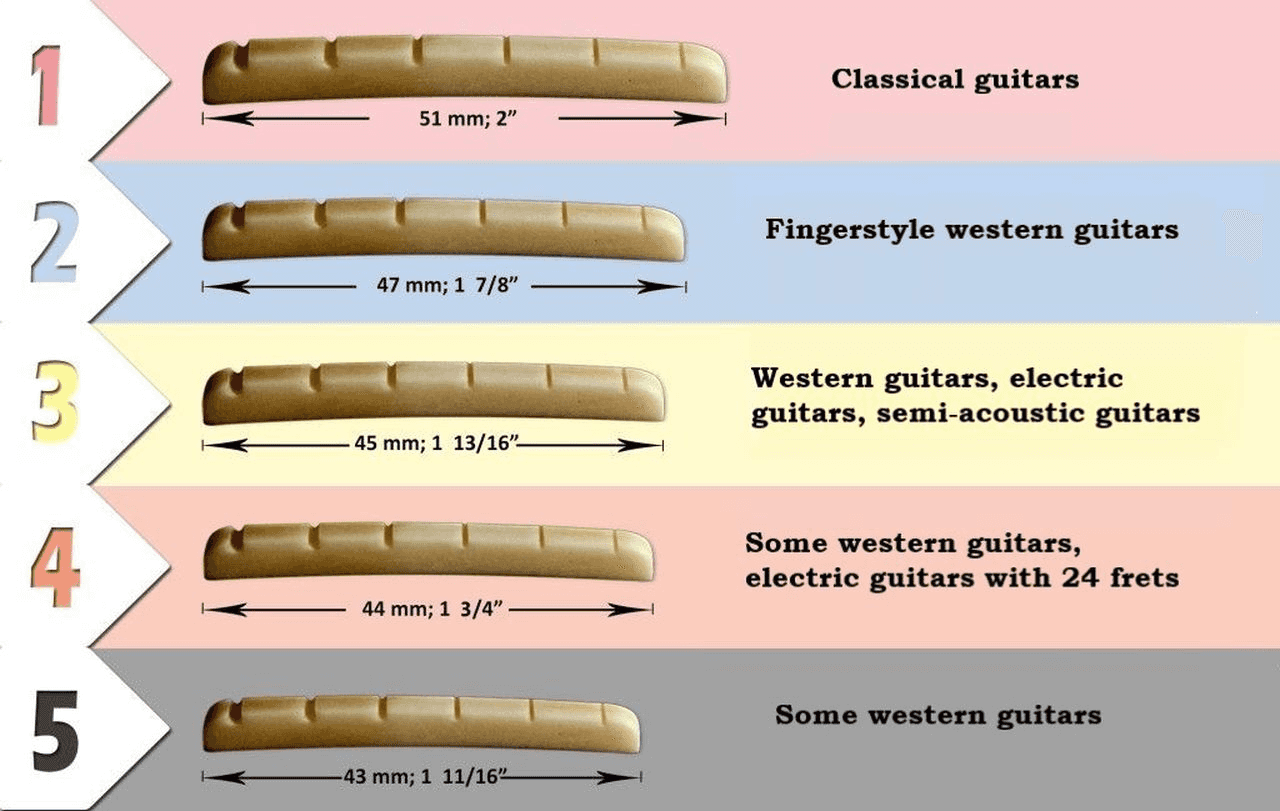
Acoustic guitars: often have a wider neck, especially classical guitars. This means that the fingers have to be spread further apart to play chords and notes, which requires a greater degree of hand extension. This can make playing complex chord progressions a bit more difficult for beginners, but it also promotes strong fingering. Electric guitars: the neck is generally narrower and the frets are often closer together. This makes fast passages and complicated chord shapes easier to perform, but requires precision to avoid hitting multiple strings at once.
On the acoustic guitar, it is essential to use your fingers efficiently when playing open chords and barre chords. Because the strings are often heavier, your fingers must be strong and precise. Barre chords can be challenging, but are a great way to improve your hand strength and finger technique.
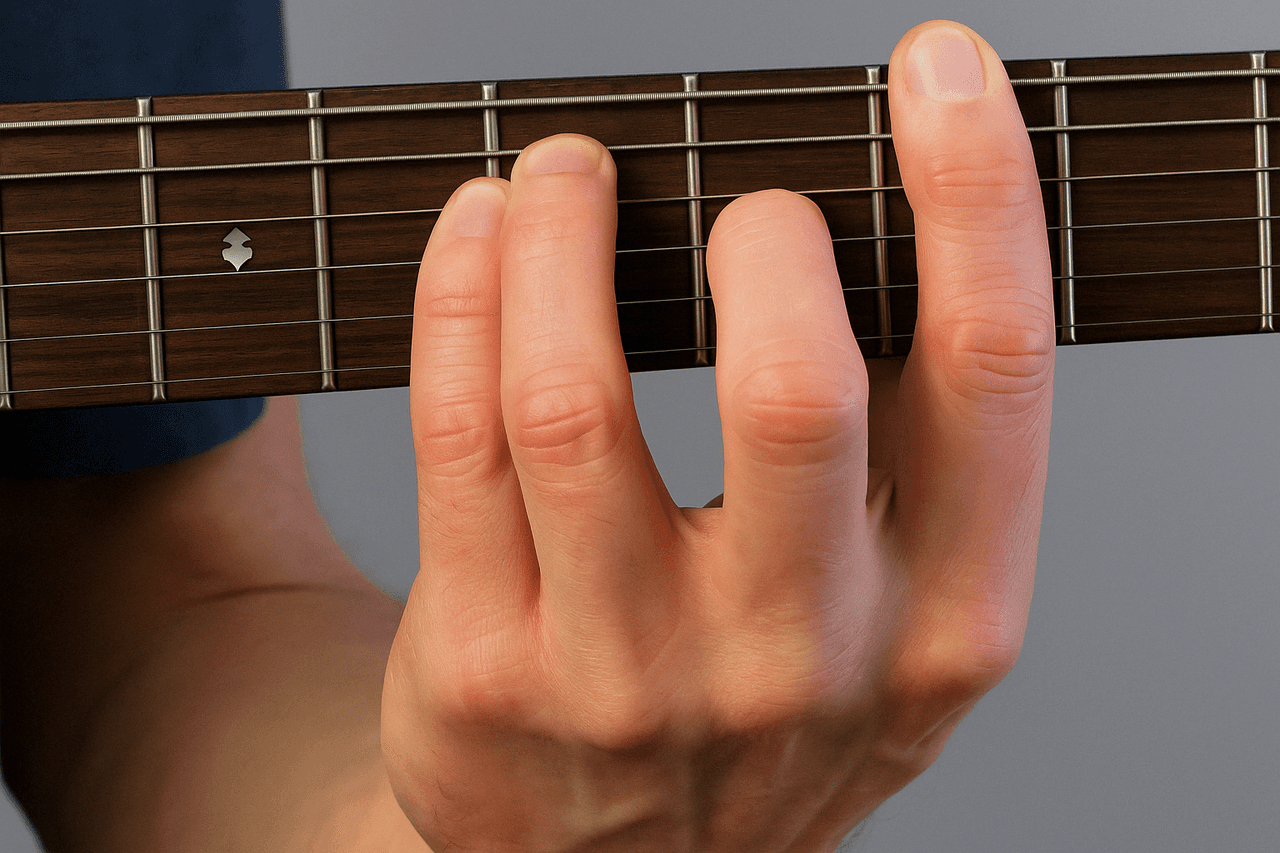
Electric guitarists often use faster and more complex techniques such as hammer-ons, pull-offs and string bending. Control of your fingers is very important here, because too much or too little pressure can distort notes or create unwanted sounds. The low tension of the strings makes it easy to perform vibrato and bends, but requires a refined technique.
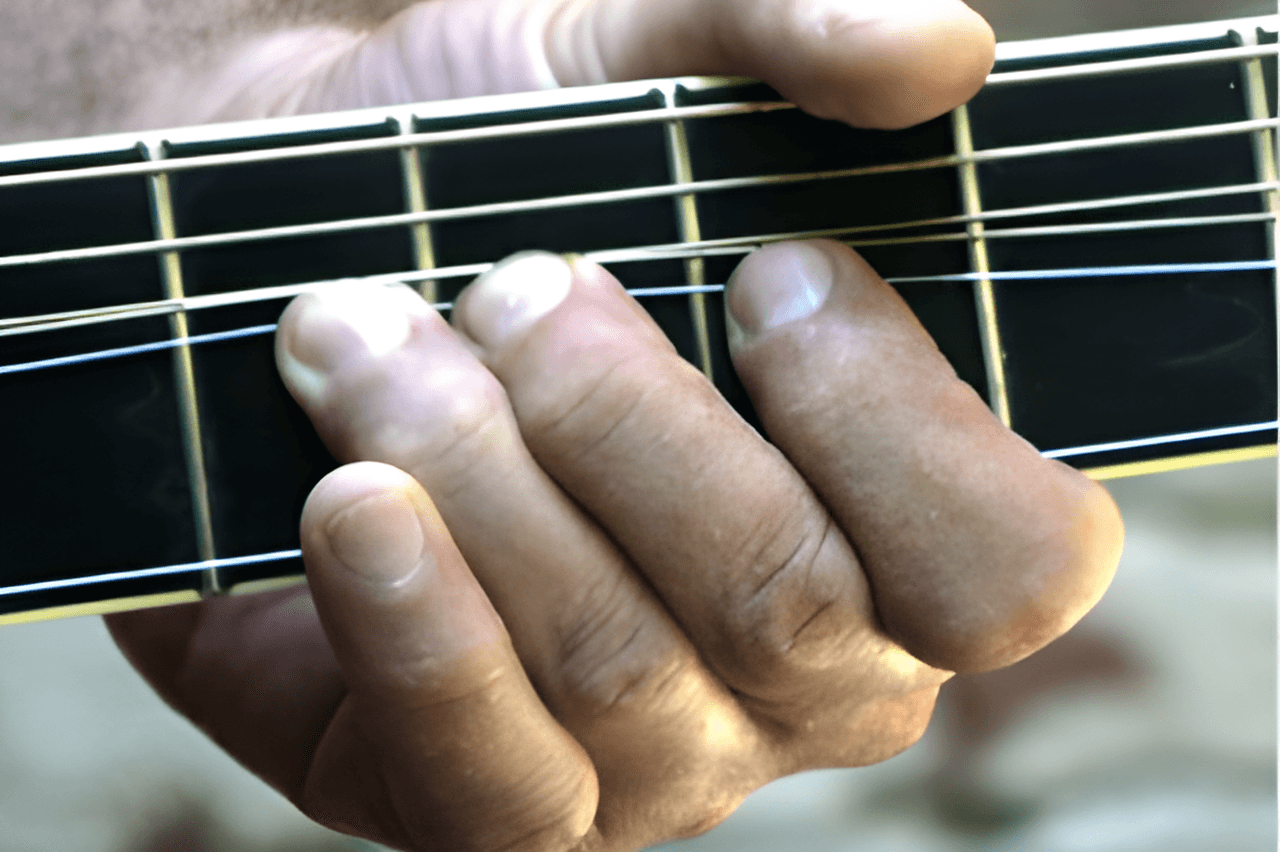
Whether you play acoustic or electric, proper fingering and technique are essential for smooth and effective guitar playing. Acoustic guitars generally require more hand strength and precision, while electric guitars often require greater speed and control. With regular practice and attention to your fingering, you can improve your playing on both types of guitars and play with greater ease.

Dive into the world of guitars, techniques, maintenance and musical inspiration. In this blog I share practical tips, answers to frequently asked questions and fun insights.
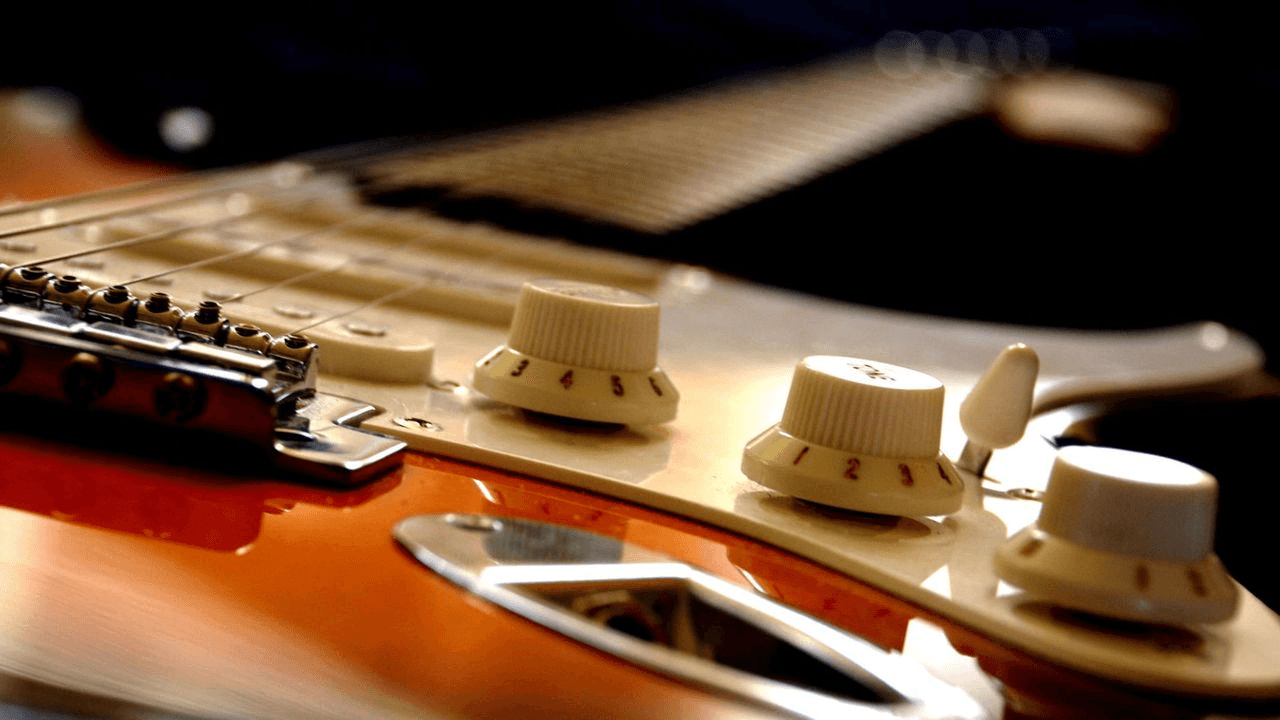
With personal guidance, flexible lesson times and access to online lesson materials, you can take the first step today!